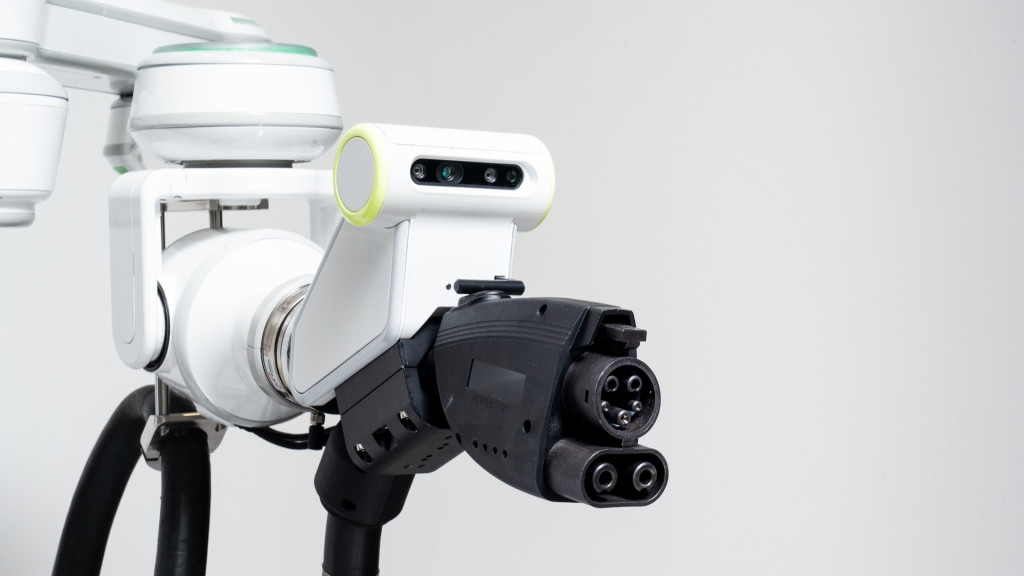Hyundai robot could ease EV charging, tackle mobility barriers

Hyundai believes automated charging robots could help make EV charging easier and more accessible.
The automaker on Tuesday released a short video showing its prototype robot charging an Ioniq 6 sedan. Hyundai showed the design of the robot in a computer-generated video last year, but this time it’s showing a working version that’s been undergoing testing at the company’s main R&D center, according to an accompanying press release.
The video shows the Ioniq 6 reversing into a parking space using the Remote Smart Parking Assist feature already available on several U.S.-market Hyundai models. In this case, though, the charge port door automatically opens. The robot then plugs in a charge cable, using a 3D camera-based AI algorithm to control plugging into the port. When charging is complete, the robot unplugs the cable and sends a notification to the driver’s smartphone.

Hyundai charging robot
Keeping in mind that many EV charging stations are outside and exposed to the weather, engineers built a dedicated charging station at the Hyundai R&D center and tested the robot in various conditions, according to the automaker. It claims the robot “was developed to operate reliably in all environments, regardless of charger location, weather and potential obstacles.”
Robotic charging is seen as a necessity not just for self-driving vehicles, but to make EVs workable for those with mobility issues. In the U.S. at least, there are no full-service EV charging stations with attendants who could provide assistance.
Several other automated charging ideas have been proposed, including some that involve robots going to the charges instead of vice versa. A Silicon Valley firm is adding locations staffed by a charging bot named Ziggy, while Aiways in China has a solution in the form of a small robot that can be summoned with an app.
Some companies have proposed pairing robotic charging with wireless induction tech. Stellantis is considering a mobile inductive charging robot for the Ram REV electric pickup. And on a slightly different tack, the supplier Continental has come up with a similar solution that still relies on a physical connection.
And let’s not forget the Tesla snake charger, a concept which used an articulated cord that wriggled its way into a car’s charge port. First shown in 2015, it was perhaps too creepy for real-world use.